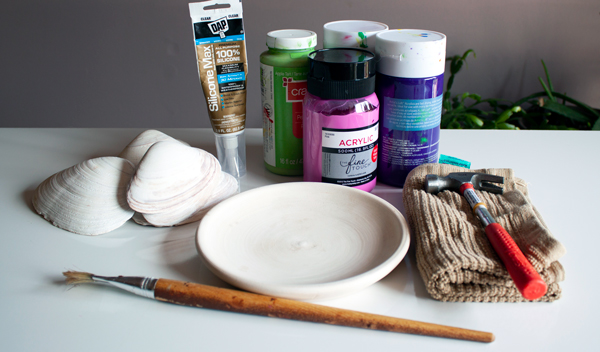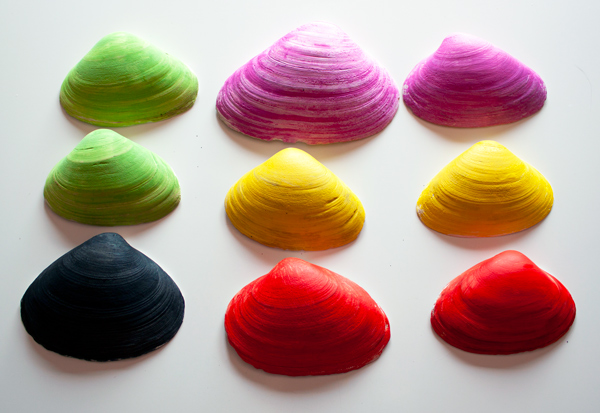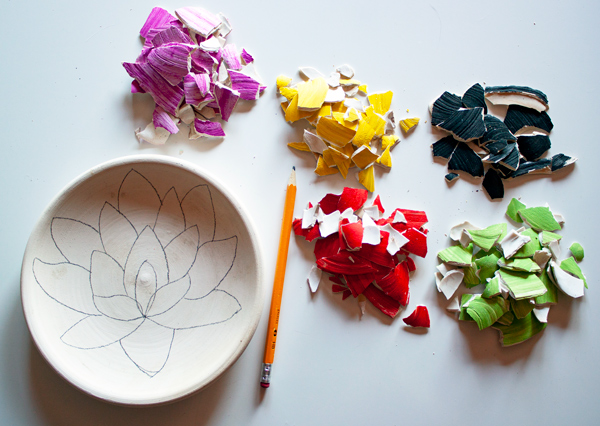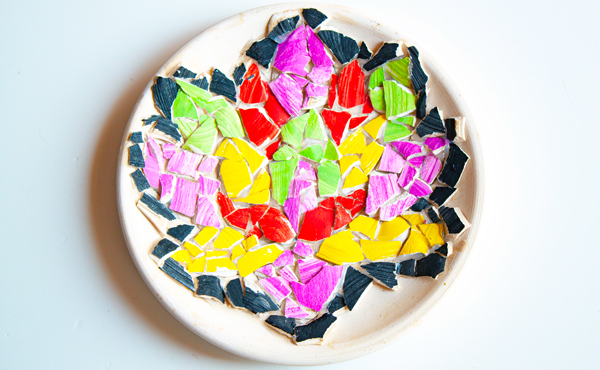Clamshell Mosaics
Turn one of your favorite shore time activities into a fun home decor project by creating a mosaic using your clamshell collection! New Jersey is home to many unique mollusks. Find broken halves of clamshells along the shore, and on some low-traffick beaches, the whole clamshell.




Materials:
- Clam Shells (collected or bought online)
- Silicone
- Acrylic Paint
- Paintbrush
- Water (to dilute the paint)
- Planter Saucer (or other items to mosaic such as a planter, frame, or stepping stone)
- Marker or Pencil
- Tape
- Drawing Paper
Step 1: Dilute your paint with water, creating a thin layer to stain the shells so that their texture remains visible and dries quickly. Begin painting the clamshells.
Step 2: Once the paint is dry, break the clamshells into smaller shards. Fold the shells into a hand towel and lightly hit with a hammer.
Step 3: Sort the broken clamshell shards into color groups.
Step 4: Sketch a design straight onto the surface you plan to mosaic. If you decide to mosaic on the glass of a frame, sketch a design onto a piece of paper. Flip the frame so that the back faces up and tape your design onto the frame’s glass. Flip it over to the front again to see the design through the glass.
Step 5: Dab a small amount of silicone over the design. Arrange and place the clamshell pieces along the dabs of silicone to adhere them to the surface.
Step 6: Wait for the silicone to dry before you hang up or use your artwork. Get creative with your artwork and use smaller shells to fill around the clamshells!
Are you looking for some inspiration to start your clamshell mosaic?
Take a peek at this Pinterest board to see how artists have used shells to create various works of art.
Learning and Discussion Questions:
1. Did you know that there are many sizes of clams?
A. Some very tiny clams are not even 1 millimeter. They can be as small as .1 or 1/10th of a millimeter across! Take a look at a ruler, and you can see that it is less than the width of two small lines.
B. Giant Clams that can be up to 4 feet across! That is a massive difference from the .1 millimeter clam! To learn more about giant clams, click this link to watch a short TED talk by Mei Lin Neo.
2. Clams also come in many colors!
A. Most clamshells we are familiar with are white and gray. Other colors that a clam can be are pink, yellow, blue, or mauve (purple hue).
B. For more fun facts and information about clams, visit this Britannica kids page.
Thank you to our sponsor, PNC Arts Alive!, for helping to make this video possible!


